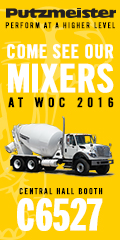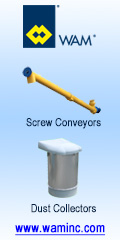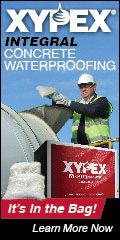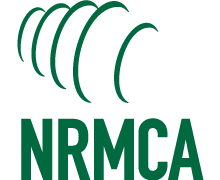
| Archive | nrmca.org | E-Store | Conferences & Events | Certifications | InFocus | Membership Directory |
NRMCA Attends ASTM Committee Meetings, Provides Updates The following is a summary of activity at the ASTM meeting held earlier this month Committees C09 on Concrete and C01 on Cement attended by NRMCA staff in Tampa, FL.
C09.20 Concrete Aggregates - A definition of "recycled material" as aggregate in the terminology of Specification ASTM C33 for Concrete Aggregates was approved after resolving several negatives that opposed the inclusion of this term. Recycled materials would need to meet the requirements of C33 with no changes to the specification. A specification for mineral fillers for use in concrete failed to resolve some negative votes, but is getting closer to approval. Mineral fillers, such as finely ground calcium carbonate or other crushed fines from aggregate may be used in self-consolidating or conventional concrete. The subcommittee will consider deleting the appendix to C33 that provides guidance on alkali aggregate reaction and instead refer to practice ASTM C1778 on alkali aggregate reactions. Revisions were approved to C29 for measuring bulk density of aggregates and additional revisions are ongoing.
C09.26 Chemical Reactions - A ballot to reapprove ASTM C289 failed and this method will not be maintained in the future. ASTM C289 is a chemical method for determining the reactivity of aggregates and is not considered to provide reliable results.
C09.40 Ready Mixed Concrete - After attempts spanning several years, a new specification for reuse of fresh returned concrete was approved. Several negatives had to be addressed – some philosophically opposed to the secification, and others addressing specific technical details. The specification will establish limits and criteria for the returned concrete that can be reused by top-loading fresh material to create a new batch. The subcommittee will include a reference to this specification (when published) in ASTM C94. A key provision is that the use of returned fresh concrete is permitted when approved by the purchaser of ready mixed concrete.
A revision to C94 that permits the use of electronic delivery tickets was approved. There were several concerns with this proposal that needed to be addressed. Other minor revisions to C94-15a were also approved. These were primarily clarification items and corrections of minor errors.
The subcommittee will revisit the issue of eliminating time limits to delivery (90 minute), consider a performance-based option and scheduling when ordering concrete, permitting job site adjustments using admixtures and propose several revisions in the testing sections of the specification. Researchers from the CIM program at New Jersey Institute of Technology presented some preliminary information on a research program that is focused on the 90-minute time limit for delivery of concrete. The research report, when completed, will be provided as technical information to support the subcommittee's ballot item on this issue.
C09.60 Fresh Concrete Tests - Minor revisions were in process for slump (C143), density or unit weight of fresh concrete (C138) and the volumetric air method (C173). A precision statement based on a recently completed interlaboratory study is being proposed for the pressure air method (C231).
A new practice on measurement of electrical resistivity of fresh concrete was balloted. It was suggested that the method could be used to estimate water-cement ratio (with pre-established calibration), estimate setting time, evaluate uniformity of mixing and to predict early age strength. Several negatives were recorded for this proposed standard.
C09.61 Strength - Revisions to ASTM C39 were proposing tolerances on test age and the time from which the age of the cylinder begins were approved. Revisions to C31 and C78 were approved to permit the use of beams with 4 x 4 inch cross section for flexural strength measurements. The subcommittee is also working on an interlaboratory study to develop a new precision statement for flexural strength tests. The subcommittee considered proposals to include provisions for preparing and testing cube specimens for strength of concrete. Proponents will likely develop a separate standard for testing cubes rather than including provisions in the existing standard.
C09.66 Fluid Penetration - The subcommittee continues to work on finalizing the surface resistivity test using Wenner probe which can be used for concrete quality assurance.
C01.10 Hydraulic Cement - Revision to cement standards are discussed in an ASTM AASHTO harmonization task group to ensure the requirements in the equivalent ASTM and AASHTO specifications are consistent. Revisions were approved to revise the requirements for loss on ignition and insoluble residue limits in ASTM C150 that restrict the ability to incorporate 5% limestone. A revision to remove the requirements for limestone to be added to blended cements in specification C595 was approved. These requirements set limits on the methylene blue index and total organic carbon on limestone. Research has indicated that these limits do not impact the performance of cement.
For more information, contact Colin Lobo at clobo@nrmca.org. |
|
|








